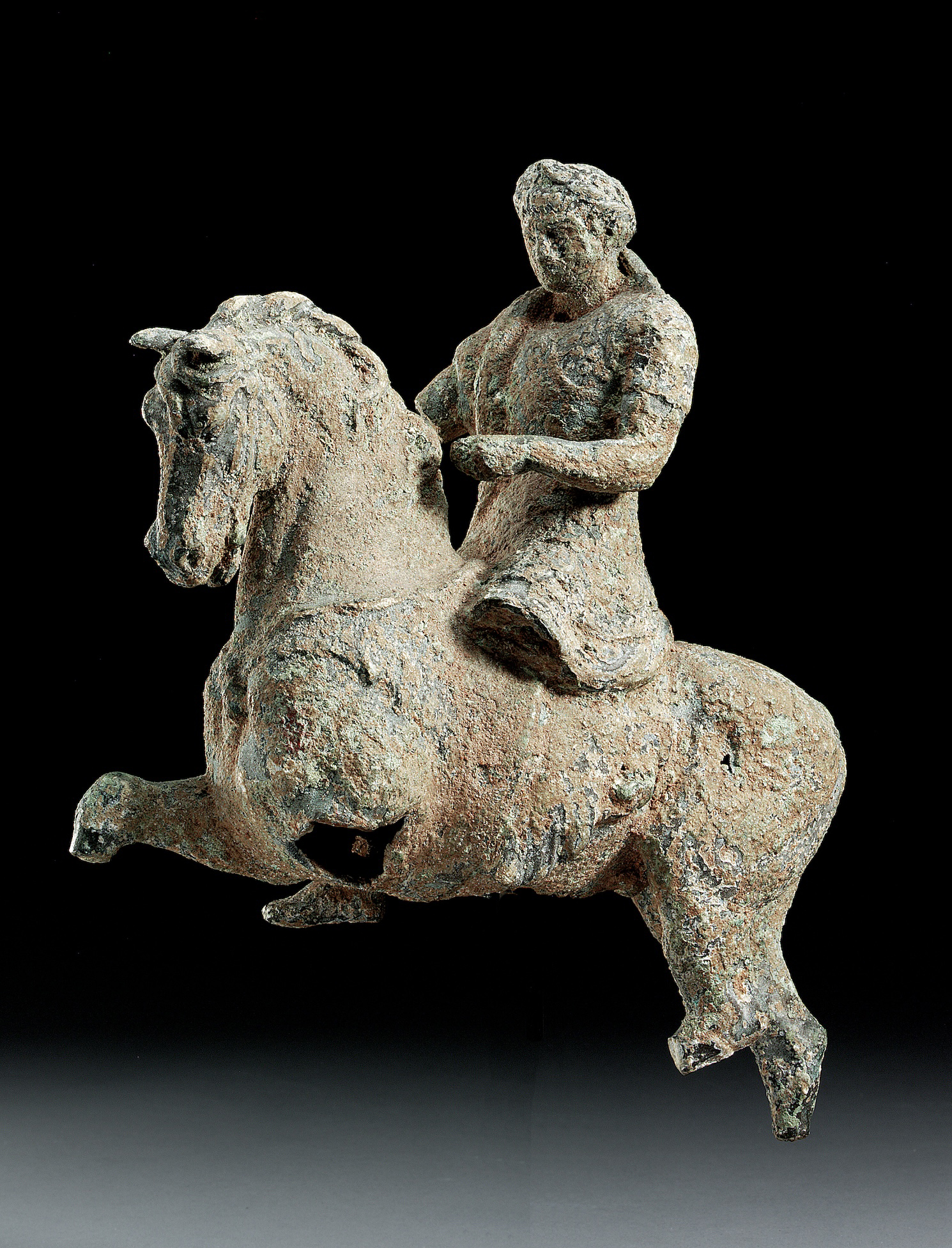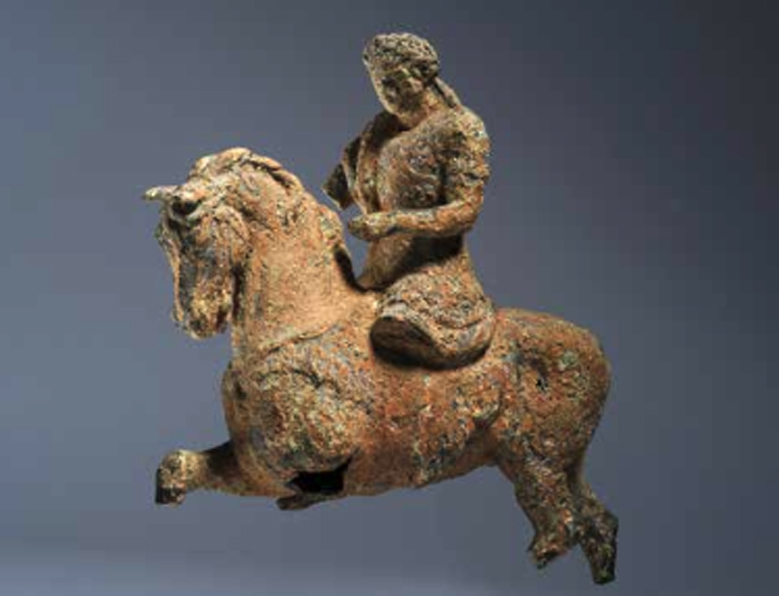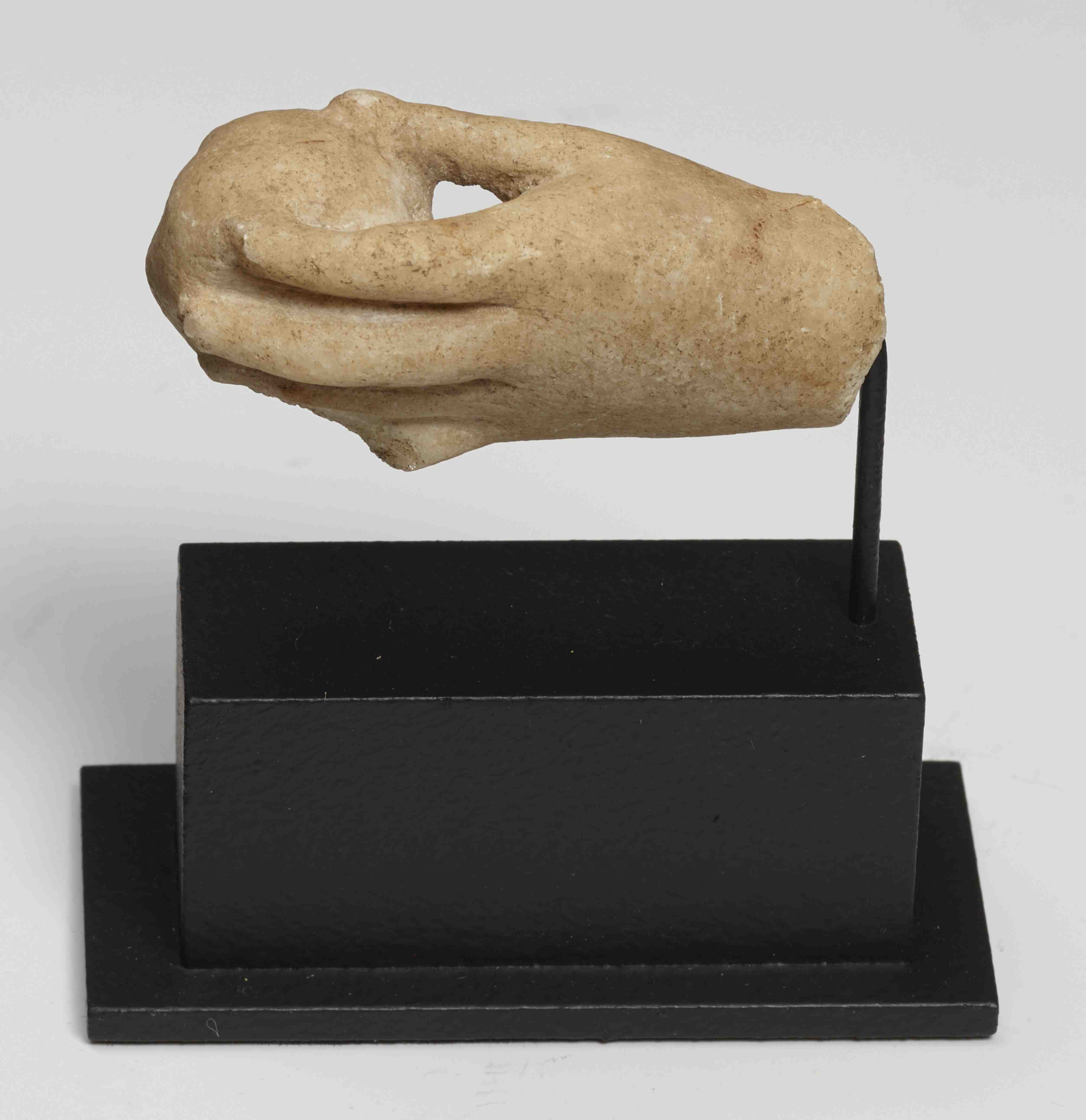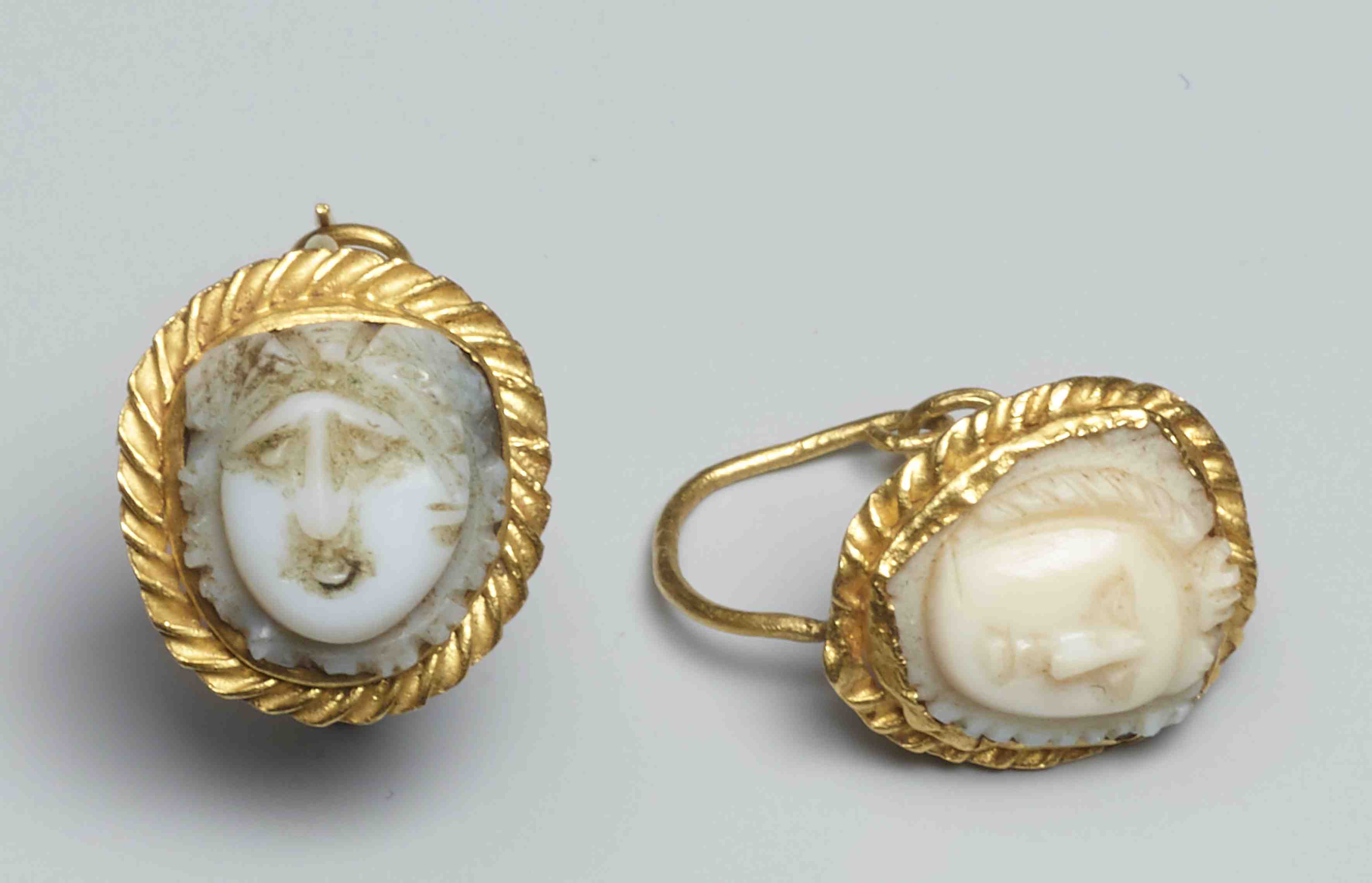While small in scale, this statuette’s unusual format together with certain cues hint that it is a rare glimpse into Imperial equestrian groups: a class of monument that has largely vanished from the material record. The powerfully modelled steed is undoubtedly a warhorse - all energy and power - with dynamic anatomical details matched by rich caparison. Elegantly reined in and tossing slightly to the left, the head features prominent lidded eyes, flaring nostrils, and mouthy lips around the bit. Thick locks of tousled mane are brushed down the neck and between forward-cocked ears to fall over the eyes. The harness is exceptionally detailed, with a pair of medallions adorning each side of the head and a larger one at the right cheek. The saddle merges with the lower hem of the rider’s tunic, with the high cantle and matelassure beneath readily visible at the rear. The saddle cloth is most unusual, with wavy edges alluding to the skin of a wild beast. It falls on either side of the horse's flanks and is secured by a girth visible beneath the chest and balteus at its front.
The rider is shown in full military dress, wearing a cuirass decorated with a central gorgoneion over which a voluminous paludamentum drapes, cast over his right shoulder to descend over his thigh and towards the calf. The lower part of the tunic is made up of two rows of short pterygia and a longer final row. On the preserved right leg, calf-high boots are visible with a thick band decorating the top. The right arm is broken above the elbow, while the left is bent at ninety degrees to grasp the reins. Although somewhat eroded, well-defined facial features are visible, including deep-set eyes beneath arched brows and a somewhat grim set to the mouth. Large ears are only summarily rendered, over which the coiffure takes the form of comma-shaped locks assembled in a fringe. The ensemble is encircled by a foliate wreath, tied about the head with one tail hanging over the rider’s shoulder and the other (broken in two parts) down the center of his back.
Interpretation
Literary sources indicate that twenty-two Imperial equestrian statues (the Equi Magni) featuring victorious emperors were displayed in the city of Rome. All but one were systematically destroyed during the Christian period. The lone survival is the equestrian statue of Marcus Aurelius now in the Capitoline Museum, which our group strongly resembles - sharing the horse’s energetic posture yet and rider’s posture but differing in his military regalia. Nonetheless, the voluminous cloak flung over his shoulder alludes to the purple paludamentum worn by rulers on campaign. The animal-skin saddlecloth, likewise, signals that something unusual is represented. The oak-leaf crown held in place by ribbon is the best indication that the rider is an emperor, the corona civica being an imperial prerogative by the late 1st century A.D. The small-scale and surface-wear makes it impossible to definitively identify the individual shown, but the style points to the High Imperial period while the lack of beard places it before Hadrian’s rule. The thick fringe of hair worn in regular comma-shaped locks low on the brow bears the closest resemblance to portraits of Trajan.
A gilt-bronze equestrian monument of Trajan (the Equus Traiani) stood at the very heart of his lavish eponymous metropolitan forum. Trajan’s forum was the last and the largest of the imperial forii, built with the booty (literal tons of gold and silver) won during his Dacian campaign. The historian Ammianus Marcellinus described it as "a construction unique in the universe, and worthy of the admiration of the gods themselves." Representations of the equestrian statue itself can be found on the reverse of silver denarii minted in 112/114, shortly after the inauguration of the forum. The bronze from which the present statuette was made contains an unusually high proportion of lead, an alloy (known as billon) far easier to work and less expensive in the ancient world than bronze of a more conventional composition, making it ideal for sculptor’s models. While it remains impossible to prove with any certainty, all these aspects point to the possibility that this statuette might have served as the model of a large-scale equestrian statue, perhaps of the fabled Equus Traiani.
Note
Billon is an alloy of metal, most commonly consisting of silver (with silver typically in the range 10-30%) , or sometimes gold, mixed with a less valuable metal such as unsually copper. It is used chiefly for making coins and medals. From the reign of Gallienus to that of Claudius II (ad 253 to 270), almost all the coins were made of billon.








